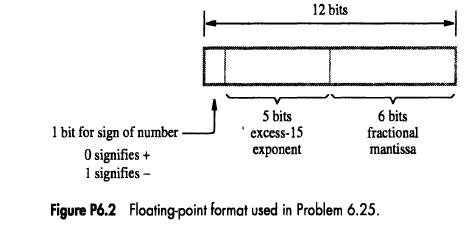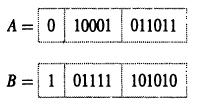In Section 6.7, we used the practical-sized 32-bit IEEE standard format for floating- point numbers. Here, we
Question:
In Section 6.7, we used the practical-sized 32-bit IEEE standard format for floating- point numbers. Here, we use a shortened format that retains all the pertinent concepts but is manageable for working through numerical exercises. Consider that floating- point numbers are represented in a 12-bit format as shown in Figure P6.2. The scale factor has an implied base of 2 and a 5-bit, excess-15 exponent, with the two end values of 0 and 31 used to signify exact 0 and infinity, respectively. The 6-bit mantissa is normalized as in the IEEE format, with an implied 1 to the left of the binary point.
(a) Represent the numbers +1.7, -0.012, +19, and in this format.
(b) What are the smallest and largest numbers representable in this format?
(c) How does the range calculated in Part
(b) compare to the ranges of a 12-bit signed integer and a 12-bit signed fraction?
(d) Perform Add, Subtract, Multiply, and Divide operations on the operands.LO1
Step by Step Answer:

Computer Organization
ISBN: 9780072320862
5th Edition
Authors: V Carl Hamacher, Carl Hamacher, Zvonko G Vranesic, Safwat G Zaky





